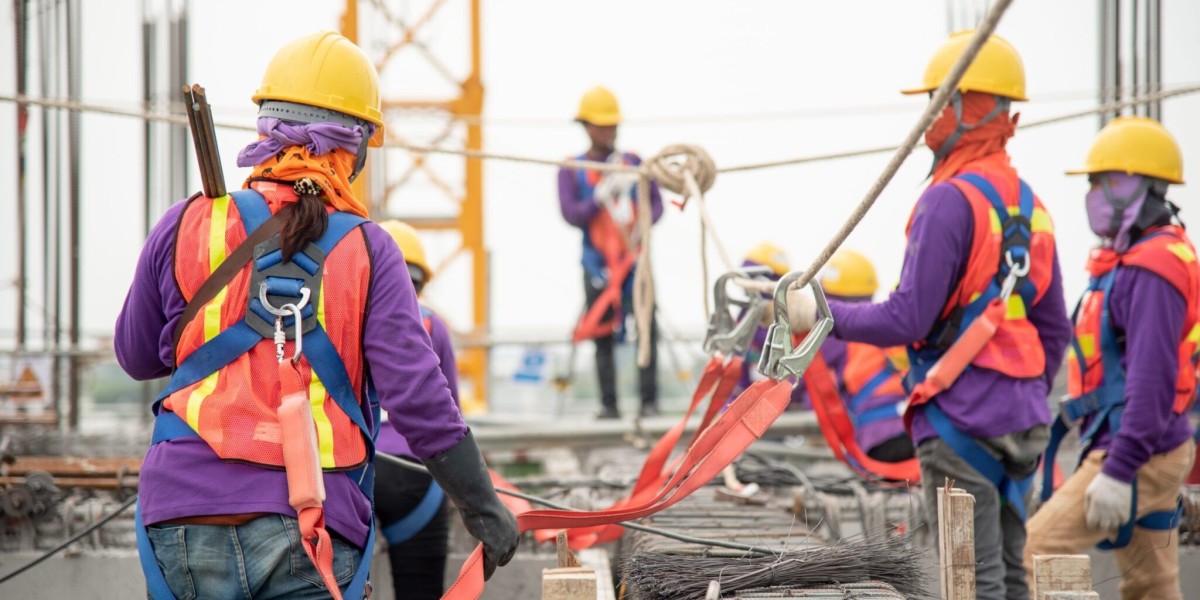Working at heights training is a critical requirement for anyone performing tasks at elevated positions. From construction sites to telecom towers and warehouse environments, working above ground level introduces serious risks. Without proper training, these tasks can result in life-threatening falls, injuries, and heavy liabilities for employers.
This blog explains what working at heights training includes, who needs it, why it’s essential for safety and legal compliance, and how to choose the right program.
Understanding the Risks of Working at Heights
Working at heights involves performing job duties where there’s a risk of falling, typically from six feet (1.8 meters) or more above ground. This can include working on ladders, rooftops, scaffolding, elevated platforms, and in some confined spaces.
Common hazards include:
Slippery or unstable surfaces
Unprotected edges and open sides
Incorrect use of ladders and scaffolds
Absence or misuse of fall protection equipment
Harsh weather conditions affecting stability
Injury from a fall can happen in seconds. That’s why training is not just encouraged—it’s often required by law.
What Is Included in Working At Heights Training?
Working at heights training is designed to prepare workers to identify, avoid, and manage fall hazards in their specific work environment. Most courses cover a mix of theoretical and practical components to ensure thorough understanding and hands-on capability.
Key areas typically include:
Hazard identification and risk assessment
Selection and use of personal protective equipment (PPE)
Fall prevention strategies
Use of fall arrest systems (harnesses, lanyards, lifelines)
Ladder and scaffold safety
Emergency response and rescue procedures
Training programs may be delivered in person, online, or in blended formats, depending on industry regulations and company needs.
Who Needs Working At Heights Training?
Any worker who operates at heights, even occasionally, should receive certified training. This includes professionals across multiple industries such as:
Construction workers
Maintenance technicians
Roofers and painters
Telecom and electrical line workers
Window cleaners
HVAC installers
Engineers and inspectors on high structures
Even if the task seems minor or routine, the risk of injury remains high. Employers are responsible for ensuring that all relevant team members are trained before assigning them to height-related tasks.
Compliance and Legal Requirements
In many regions, working at heights training is regulated by law. Regulatory bodies like OSHA in the United States, Safe Work Australia, and Canadian provincial safety authorities require training for anyone working above specific height thresholds.
Failure to provide proper training can lead to:
Legal penalties and fines
Worksite shutdowns
Insurance complications
Increased liability in the event of an accident
In addition to legal consequences, an untrained workforce can negatively impact a company’s reputation and worker morale. Providing training ensures your business is compliant and demonstrates your commitment to employee safety.
Benefits of Working At Heights Training
Apart from compliance, investing in working at heights training brings several long-term advantages for both employers and employees.
1. Accident and Injury Prevention
Training drastically reduces the risk of falls and related injuries. This translates to fewer lost-time incidents, medical expenses, and insurance claims.
2. Increased Worker Confidence
Trained employees are more confident in performing their duties at heights. This leads to better performance, fewer mistakes, and higher productivity.
3. Improved Safety Culture
When safety is prioritized through training, it becomes an integral part of your organizational culture. This can reduce complacency and improve overall team awareness.
4. Reduced Liability and Legal Risk
Training helps employers meet safety standards, reducing the chances of regulatory violations and legal action.
5. Business Continuity and Efficiency
A safe workforce is a reliable workforce. Training ensures that projects stay on schedule and business operations are not disrupted by accidents or investigations.
How to Choose the Right Training Provider
Selecting a certified, experienced training provider is critical to getting value from your working at heights training program. Here are some key factors to consider:
Certification: Ensure the course is accredited by relevant local safety authorities.
Expert Instructors: Trainers should have real-world experience in high-risk work environments.
Practical Training: Choose providers that offer hands-on equipment use and real-world scenarios, not just theory.
Course Format: Look for flexibility—some providers offer hybrid models combining online modules with on-site practical training.
Post-Training Support: Consider programs that offer refresher training, ongoing safety updates, or additional resources.
Also, review testimonials or case studies to evaluate the success of their training in real-world applications.
Onsite vs. Online Training Options
Some organizations opt for onsite training, where trainers visit your facility to deliver practical sessions using your own equipment and conditions. Others prefer online or hybrid options, especially when needing flexibility for multiple locations or remote teams.
Each approach has its benefits:
Onsite training ensures team-wide learning under realistic conditions.
Online learning is great for convenience, theory delivery, and cost-effectiveness.
Hybrid models combine both, offering a balance of flexibility and hands-on practice.
Whichever model you choose, ensure the training includes assessment and certification at the end.
Conclusion: Invest in Safety, Invest in Your Team
Working at heights training isn’t just a regulatory checkbox—it’s an essential tool that protects lives, ensures compliance, and builds a safer work environment. Whether you're a project manager, safety officer, or employer, prioritizing proper training helps your team work smarter, safer, and more confidently.
Don’t wait for an accident to drive change. Contact us today!







